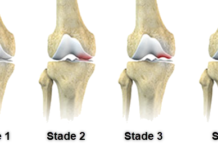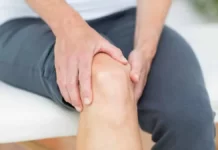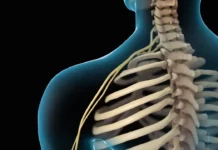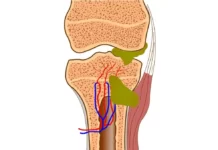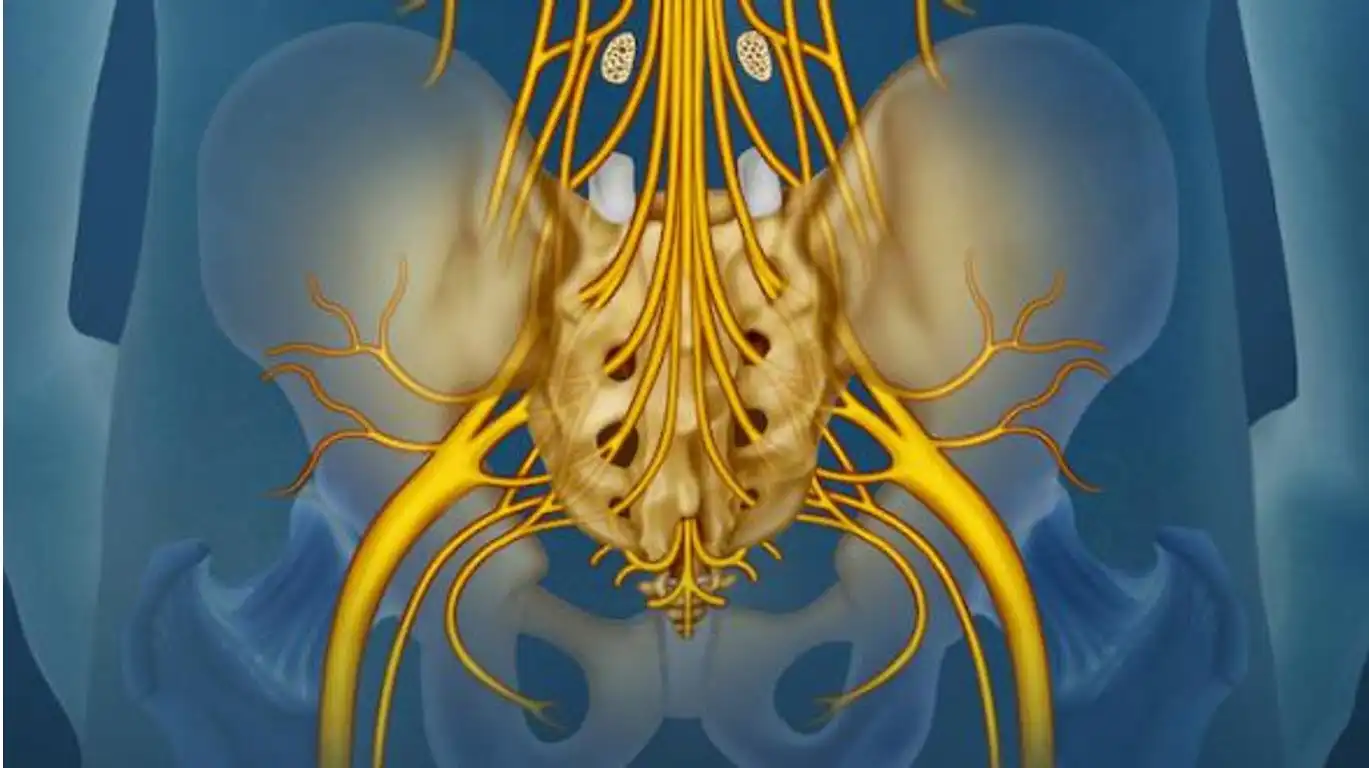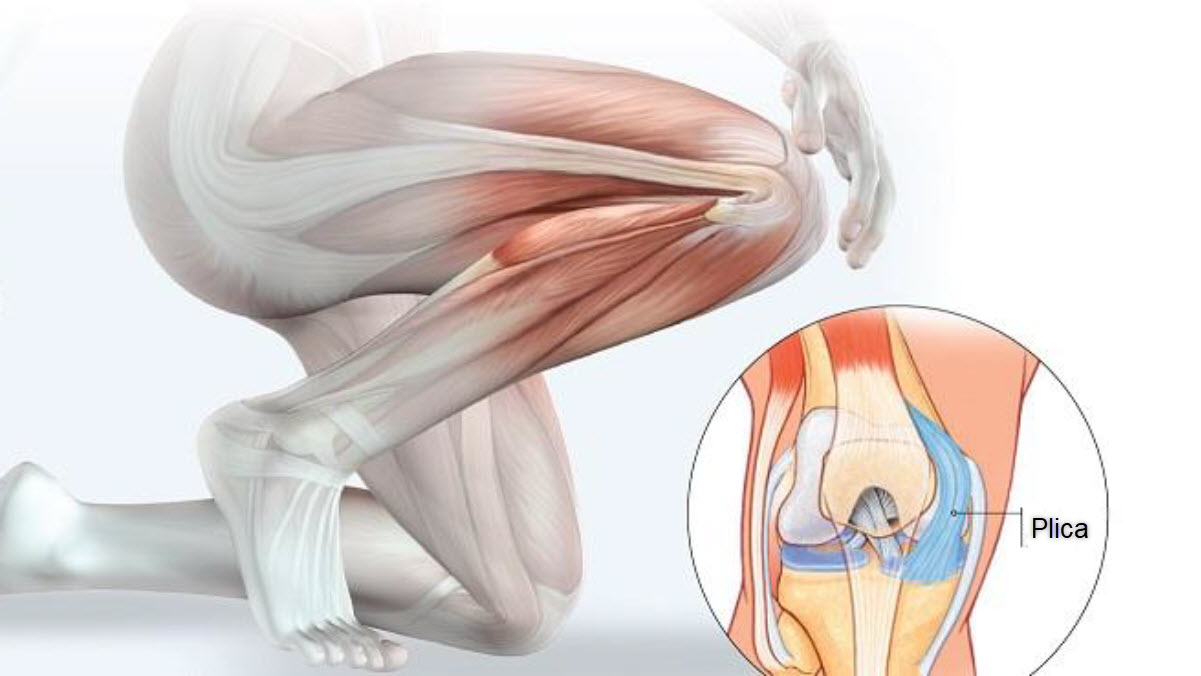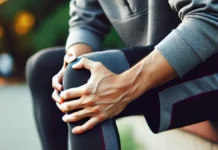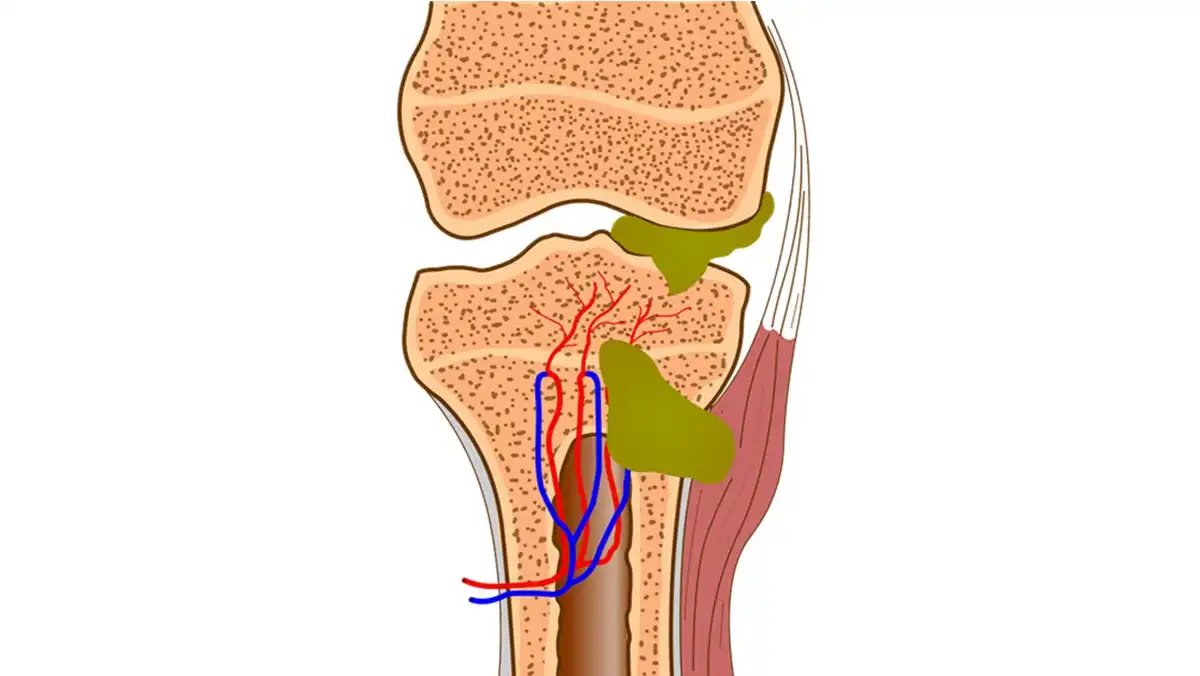Joint hypermobility is a condition characterized by excessive range of motion in the joints, beyond what is normal for a given person.
Introduction
In the broad panorama of musculoskeletal conditions, joint hypermobility is distinguished by an exceptionally wide range of motion. For some, it is a natural gift of flexibility, but for others, it is a daily reality that can generate various challenges. This characteristic, often overlooked, deserves special attention, especially in the field of osteopathy.
Imagine joints that can move far beyond the limits considered normal. This may seem like a blessing, but joint hypermobility, when left unchecked, can be a source of complications and pain. It is in this context that osteopathy emerges as a valuable ally, offering tailored solutions to support those living with this particularity.
As we explore, we will delve into the intricacies of joint hypermobility, unraveling its physical, psychological, and therapeutic aspects. From understanding the origins to developing osteopathic strategies, this journey aims to illuminate the nuances of this condition and guide those seeking a balance between flexibility and stability. Welcome to the fascinating world of joint hypermobility and osteopathy.
Physical activities can contribute to joint laxity
Certain physical activities can contribute to joint laxity by putting excess pressure on joints, ligaments, and tendons. Here are some examples of specific activities that may be associated with increased joint laxity:
- Advanced Yoga: Certain yoga poses, especially those that require extreme bending or twisting of the joints, can contribute to laxity.
- Advanced Pilates: Pilates exercises that place high stress on the joints, especially those involving significant flexion and extension, can contribute to laxity, especially if not performed correctly.
- Rhythmic Gymnastics: The graceful, acrobatic movements of rhythmic gymnastics can cause excessive stretching of joints, potentially increasing laxity.
- Combat sports: Some combat sports, such as taekwondo or boxing, can involve fast, jerky movements that put strain on the joints.
- Acrobatic sports: Sports such as artistic gymnastics, trampolining or high jumping can stress joints beyond their normal range of motion.
- Cheerleading: The jumping, twisting, and lifting movements in cheerleading can contribute to joint laxity, especially when in extreme positions.
- Sliding sports: Activities such as freestyle skiing, snowboarding or figure skating can involve movements that challenge joint stability.
- Excessive Stretching: Extreme stretching sessions, especially when performed repeatedly without proper attention to technique, can contribute to laxity.
It is important to note that joint laxity can result from a variety of factors, including genetics, and engaging in these activities will not necessarily lead to joint laxity in everyone.
Role of Ligaments in Joint Stability
Ligaments, composed of dense, fibrous connective tissues, are essential structures for the stability and functionality of joints. Their main role is to connect bones together, forming a sort of “biological rope” that ensures the cohesion of joint structures. By limiting excessive movements and guiding natural movements, ligaments protect joints from injury and allow the body to function harmoniously.
Composition and Structure of Ligaments
Ligaments are primarily made of type I collagen, an essential fibrous protein that gives them high mechanical strength and makes them able to withstand significant stresses without breaking. This characteristic is crucial for maintaining joint stability against the forces exerted during daily movements or intense physical activities. Type I collagen is organized into parallel bundles, an arrangement that maximizes their ability to resist tensile forces applied in a specific direction.
In addition to collagen, ligaments also contain elastic fibers, although these are present in smaller amounts. These elastic fibers allow for slight extensibility, giving the ligaments some flexibility while limiting their excessive elongation. This unique combination of rigidity and elasticity ensures that the ligaments can stabilize joints while adapting to the body’s natural movements. For example, when jumping or twisting, this flexibility limits the risk of rupture while allowing controlled movement.
The cellular composition of ligaments also plays a fundamental role. Fibroblasts, the main cells of ligament tissues, are responsible for the production and maintenance of collagen and elastin fibers. These cells are particularly active in young or developing ligaments, but they also continue to repair and remodel fibers throughout life. This activity is essential to allow ligaments to adapt to daily microtraumas and repetitive stresses.
The extracellular matrix surrounding these fibers is composed of glycoproteins and proteoglycans, which play a role in tissue hydration and lubrication. These components allow the fibers to slide lightly against each other, promoting tensile strength and distribution of mechanical loads. In addition, the balance between the structural elements of the ligaments is maintained through precise biological processes, although these processes can slow down with age, making the ligaments more vulnerable to injury.
Due to their low vascularity, ligaments have a limited ability to regenerate after injury. Reduced blood flow slows the supply of nutrients and repair cells, which is why ligament healing can take a long time, especially in cases of severe tears. However, controlled stress on ligaments, through appropriate rehabilitation, can stimulate fibroblasts to produce new fibers and improve the quality of healing.
Overall, the structure and composition of ligaments are perfectly adapted to their stabilizing and protective role. They must constantly find a balance between rigidity and flexibility, stability and movement. This delicate balance is essential to ensure that joints function optimally, while reducing the risk of injury, especially during intense physical activities or unexpected movements.
Mechanical Function: Stabilization and Protection
Ligaments play a fundamental role in joint stability by preventing excessive or abnormal movements that could compromise joint integrity. Their stabilizing function relies on their ability to resist mechanical forces while guiding movements within anatomically safe ranges. Each joint is surrounded by ligaments adapted to its structure and function, acting as natural barriers to prevent joint misalignments or deformities.
In the knee joint, the ligaments are particularly illustrative of this role. The anterior cruciate ligament (ACL) and posterior cruciate ligament (PCL), located in the center of the joint, are crucial for controlling translational movements. The ACL prevents the tibia from sliding forward relative to the femur, while the PCL limits its backward movement. These two ligaments work together to ensure sagittal stability of the knee, even during intense efforts such as jumping or sudden changes of direction.
The lateral ligaments of the knee, such as the medial collateral ligament (MCL) and lateral collateral ligament (LCL), play a complementary role in preventing excessive lateral movements. These structures stabilize the joint against forces applied laterally, such as when the knee is twisted or impacted to the side. Without their intervention, such movements could lead to misalignment or injury, such as a dislocation.
In addition to their role in limiting excessive movement, ligaments also act as biological shock absorbers. When force is applied to a joint, such as when running, jumping, or landing, ligaments distribute the stress evenly. This reduces stress on surrounding structures, including cartilage and bone, and thus prevents overuse injuries. For example, when jumping, the ligaments in the knee and ankle absorb and dissipate some of the energy generated by the impact with the ground, minimizing the risk of ligament tears or joint microtrauma.
The role of ligaments as shock absorbers is even more apparent in high-intensity sports activities. In these contexts, the forces applied to the joints can be up to several times greater than the body weight. Ligaments must not only keep the joint stable, but also preserve its alignment despite significant constraints. Their ability to distribute loads therefore becomes essential to protect the joint against acute injuries, such as sprains, or chronic lesions, such as osteoarthritis.
Additionally, ligaments work synergistically with other joint structures to optimize stability and movement. For example, ligaments work closely with surrounding muscles and tendons, which complement their role by generating active forces to stabilize the joint. In the event of ligament injury, such as an ACL tear, this synergy is disrupted, leading to joint instability and an increased risk of secondary injuries.
Finally, the ability of ligaments to support significant forces and limit abnormal movements underscores their importance for daily activities and physical performance. Whether walking, running, or playing sports, ligaments provide ongoing stability and protection, allowing the body to function optimally while minimizing the risk of injury. Their role in cushioning loads, combined with their stabilizing function, makes them essential elements for joint health and overall mobility.
Guiding Role in Joint Movement
Ligaments, in addition to their stabilizing role, play an essential role in guiding joint movements. They act as biological “rails”, directing the bones in a specific trajectory to ensure a normal and harmonious range of motion. This guiding function is fundamental to ensure not only the proper functioning of the joint, but also to preserve the integrity of surrounding structures, such as cartilage, tendons and muscles.
By guiding movement, ligaments limit abnormal displacements between joint surfaces, preventing excessive friction or malpositions that could damage surrounding tissues. For example, in the shoulder joint, the glenohumeral ligaments play a crucial role in keeping the head of the humerus centered in the glenoid cavity while allowing high mobility. Without this guiding function, the joint could become unstable, increasing the risk of dislocation or chronic injuries.
This ability of ligaments to guide movements is particularly important in joints subjected to significant constraints or high amplitudes, such as the knee, ankle or wrist. In the knee, the anterior cruciate ligament (ACL) and posterior cruciate ligament (PCL) not only limit excessive movements, but also actively participate in controlling the sliding and rolling of the articular surfaces of the femur and tibia during flexion and extension. This guiding role is essential to ensure an even distribution of loads on the cartilage, thus preventing its premature wear.
When ligaments are damaged, their ability to properly guide movement is compromised, which can lead to joint instability. This instability disrupts joint alignment and dynamics, significantly increasing the risk of secondary injuries. For example, an ACL tear can lead to an imbalance in knee movement, causing mechanical overload on the cartilage and menisci. In the long term, this can contribute to the development of degenerative pathologies, such as osteoarthritis.
The importance of ligaments in guiding movement goes beyond the mechanical. They also contain specialized sensory receptors, such as mechanoreceptors, that provide information about the position and movement of the joint (proprioception). These sensory signals are essential for coordinating muscle responses and maintaining smooth, safe movement. When a ligament is injured, this sensory communication is impaired, leading to decreased proprioception and an increased risk of re-injury or re-injury.
In cases of ligament injury, rehabilitation often aims to restore not only joint stability, but also the ability to guide movements. This includes muscle strengthening, coordination and proprioception exercises, designed to compensate for the loss of ligament function and restore optimal movement control. Furthermore, in osteopathy, a holistic approach is often used to correct mechanical imbalances and promote full functional recovery.
Trauma Response
Ligaments, although extremely strong, can be injured when subjected to forces beyond their mechanical capacity. These injuries often occur in the context of sports activities, accidents, or sudden, involuntary movements. Ligament injuries can range in severity from simple stretches or microtears, often classified as mild sprains, to partial or complete ruptures that seriously compromise joint stability. These injuries frequently result in acute pain, localized swelling, reduced mobility, and in the most severe cases, chronic instability that can affect quality of life.
Types of Ligament Injuries
- Mild sprain : A mild sprain is an overstretching of the ligament fibers without significant tearing. This type of injury typically causes moderate pain and minimal swelling, but the joint remains generally stable.
- Moderate sprain : In this case, some fibers of the ligament are torn, resulting in greater swelling, bruising, and a noticeable decrease in joint stability.
- Complete rupture : A complete rupture of the ligament results in a complete loss of continuity of the ligament fibers. This causes marked instability, severe pain, and in some cases, an audible “cracking” sound at the time of injury. Complete ruptures often require surgery to repair or reconstruct the ligament.
Impact of Low Vascularization
Ligaments have limited regeneration capacity due to their low blood supply. Compared to other tissues such as muscle, they have minimal blood supply, which slows down the delivery of nutrients and repair cells needed for healing. This explains why ligament injuries often take weeks or even months to fully recover, even in the mildest cases.
In the healing process, fibroblasts play a central role in producing new collagen fibers to replace damaged tissue. However, the collagen produced during initial healing is often disorganized, making the ligament less strong than before the injury. This tissue remodeling can take several months, during which time the joint remains vulnerable.
Consequences of Ligament Trauma
When a ligament is injured, joint stability is compromised, which can lead to long-term complications. Chronic instability, due to poor healing or insufficient support, can promote repeated injuries. In addition, an unstable joint is more likely to develop secondary injuries, such as cartilage tears or early osteoarthritis.
Ligament injuries also affect proprioception, or the body’s sense of space. Ligaments contain mechanoreceptors that send information to the nervous system to adjust movements. When these receptors are damaged, muscle coordination and control are impaired, increasing the risk of further injury.
How Joint Laxity Can Compromise Stability
- Overstretching of Ligaments: Increased joint laxity often manifests as overstretching of ligaments, altering their structure and function. When a ligament is overstretched, it loses its ability to maintain optimal tension, a key characteristic for joint stability. This results in a decrease in their effectiveness in limiting excessive or abnormal movement within the joint. Ligaments play a key role in acting as “biological ropes” that guide and stabilize bones. When this natural tension is compromised, joint surfaces can become misaligned more easily, increasing the risk of excessive friction, instability, and injury. Over the long term, this loss of mechanical stability can overload surrounding structures, such as muscles, tendons, and cartilage, increasing their vulnerability to injury and premature wear.
- Abnormal Bone Displacement: Excessive laxity often causes abnormal bone displacement within the joint, severely compromising its alignment and function. This mechanical instability increases the risk of subluxations , where bones become partially misaligned, or dislocations , where bones completely lose their normal contact. These abnormal displacements increase the stresses placed on surrounding tissues, including tendons, muscles, and articular cartilage. These repeated or prolonged misalignments can cause additional ligament injuries, leading to acute or chronic pain. In addition, premature cartilage degradation, due to uneven distribution of joint loads, is a common consequence of joint instability related to laxity. In the long term, this accelerated wear can promote the development of degenerative disorders such as osteoarthritis, reducing mobility and affecting quality of life.
- Overloading of Surrounding Structures: When joint stability is compromised, surrounding muscles are often called upon to compensate for the lack of support provided by weakened ligaments. This functional overload places excessive strain on the stabilizing muscles, which must work constantly to maintain joint alignment and prevent abnormal movements. This can lead to premature muscle fatigue , as the muscles are not designed to support prolonged stabilizing activity. This fatigue reduces their efficiency and coordination, increasing the risk of mechanical imbalances. In response to this overload, muscle spasms may occur, as a protective mechanism to limit joint movement. However, these spasms can themselves become a source of pain and dysfunction. In the long term, this excessive strain can lead to muscle injuries , such as microtears or chronic muscle strains, further aggravating the problems associated with joint instability. This vicious cycle underscores the importance of not only strengthening muscles, but also restoring joint stability to prevent muscle complications and optimize overall function.
- Impact on Joint Function: Joint laxity can disrupt normal joint function, affecting various aspects of daily life, sports and exercise. During normal activities such as walking, lifting or repetitive movements, a lax joint may have difficulty maintaining proper alignment, which can lead to mechanical imbalances. These imbalances increase the likelihood of microtrauma, pain or premature fatigue. In the context of sports or exercise, joint laxity can have more obvious consequences. Rapid movements, changes in direction or jumping place significant forces on the joints. Excessive laxity can then reduce the ability of the ligaments to limit abnormal movements, increasing the risk of injuries such as sprains, subluxations or ligament tears. This can lead to decreased physical performance and require adjustments in activities. However, the impact of joint laxity varies considerably from person to person. Some individuals, particularly those with constitutional hypermobility, may experience no significant discomfort and may even benefit from a greater range of motion in certain sports disciplines, such as gymnastics or dance. Others, however, may suffer from chronic pain, feelings of instability, or functional limitations, affecting their ability to perform simple tasks or complex exercises. This variability underlines the importance of individualized assessment to adapt management strategies and prevent long-term complications.
Causes of joint laxity
Joint laxity, characterized by excessive or abnormal range of motion in the joints, can be caused by a variety of factors. These causes can be genetic, traumatic, acquired, or environmental. Their influence varies between individuals and can affect one or more joints.
1. Genetic Factors
Genetic predispositions play an important role in joint laxity. Some inherited conditions, such as Ehlers-Danlos syndrome or Marfan syndrome, affect the production and structure of collagen, a protein essential for the strength and elasticity of ligaments. These genetic abnormalities make connective tissues abnormally elastic, leading to generalized joint hypermobility. Even in the absence of specific genetic disorders, some people may have constitutional hypermobility, a condition often seen in children or young adults.
2. Traumatic Injuries
Joint trauma, such as sprains or ligament tears, is a common cause of localized joint laxity. When a ligament is subjected to excessive force, it can stretch beyond its normal capacity or rupture. If ligament healing is incomplete or disorganized, its stabilizing function can be compromised, leading to chronic laxity. This is particularly common in joints such as the knee, shoulder, or ankle, which are often stressed in sports activities or accidents.
3. Environmental and Acquired Factors
Joint laxity can also be acquired through environmental factors or lifestyle habits. Repetitive activities or sports requiring high range of motion, such as gymnastics, dance, or yoga, can gradually stretch ligaments and lead to hyperlaxity. In athletes participating in these disciplines, laxity may initially be a functional advantage, but it can become problematic over time, increasing the risk of injury and joint instability.
4. Hormonal Factors
Hormonal fluctuations, especially during pregnancy, can influence joint laxity. Under the influence of the hormone relaxin, ligaments become more flexible to facilitate childbirth. However, this temporary increase in laxity can also affect other joints, increasing their vulnerability to injury.
5. Aging
With age, connective tissues can lose their elasticity and ability to resist mechanical stress. Although this often results in joint stiffness, episodes of joint laxity can occur in certain pathological conditions related to wear of the ligamentous structures.
Comprehensive Strategies to Manage Joint Laxity and Improve Stability
- Targeted Muscle Strengthening Exercises:
- Incorporate specific muscle strengthening exercises to stabilize the affected joints.
- Work with a physical therapist to develop a program tailored to your needs.
- Adapted Physical Activities:
- Opt for low-impact activities that maintain joint stability, such as swimming, cycling and walking.
- Avoid sports with a high risk of joint trauma, such as high jumping or acrobatic sports.
- Proper Warm-Up:
- Take time to warm up properly before any physical activity to prepare muscles and joints.
- Include gentle stretches to improve flexibility, while avoiding extreme movements that can worsen laxity.
- Correct Technique:
- Learn and practice correct movement techniques to reduce stress on joints.
- Seek advice from a qualified professional to adjust your technique in specific activities.
- Core Strengthening:
- Strengthen core muscles (abdominals, lower back) to support the spine and improve overall stability.
- Pilates exercises can be beneficial for strengthening the core in a balanced way.
- Weight Control:
- Maintain a healthy weight to reduce pressure on joints.
- Consult a nutritionist to develop a meal plan tailored to your needs.
- Adequate Hydration:
- Make sure to stay well hydrated, as water plays a crucial role in joint health.
- Joint Supports:
- Use appropriate joint supports, such as knee braces or orthotics, to provide additional support during physical activities.
- Regular Medical Consultation:
- Schedule regular medical examinations to monitor changes in joint laxity and adjust your management plan accordingly.
- Listening to the Body:
- Pay attention to your body’s signals. If you experience pain or instability, adjust your activity and consult a healthcare professional.
Complications of Joint Laxity: Dynamics and Compensatory Muscle Strategies
1. Recurrent Ankle Sprain
- Dynamics created by laxity:
Laxity of the lateral ligaments of the ankle, such as the anterior talofibular ligament, reduces joint stability, particularly in twisting or inversion movements. This makes the ankle vulnerable to repeated sprains, often caused by uneven terrain or sudden changes in direction. These recurring episodes lead to chronic instability, reducing proprioception of the joint and increasing the risk of re-injury. - Muscle strategy:
To compensate, the peroneal muscles (longus and brevis) are excessively used to limit inversion movements. Their constant activation aims to stabilize the joint in real time. However, this compensation often leads to premature muscle fatigue and persistent lateral pain. The calves also play a role in managing vertical forces, but overloading these muscles can lead to additional tension and even cramping.
Management includes strengthening the peroneals and intrinsic muscles of the foot through targeted exercises, as well as the use of bandages or orthoses to limit excessive movements.
2. Anterior Knee Instability
- Dynamics created by laxity:
Anterior cruciate ligament (ACL) laxity causes the tibia to slide excessively forward relative to the femur. This misalignment is particularly problematic during activities involving changes in direction or jumping. This instability exposes the joint to repeated microtrauma, affecting the cartilage and increasing the risk of premature osteoarthritis. - Muscle strategy:
The quadriceps, especially the vastus medialis, are heavily used to compensate for this instability. The hamstrings, which slow the gliding of the tibia, must also work excessively. This overactivation of the muscles leads to rapid fatigue and pain, especially after intense activities. The resulting muscle imbalances can worsen the instability.
A muscle rehabilitation program focuses on strengthening the hamstrings, improving proprioception, and developing joint-specific neuromuscular control.
3. Recurrent Shoulder Dislocation
- Dynamics created by laxity:
Laxity of the joint capsule and glenohumeral ligaments promotes displacement of the humeral head out of the glenoid cavity, particularly during movements involving external rotation or abduction. This chronic instability increases the risk of associated injuries, such as labral tears or the development of persistent pain. - Muscular strategy:
The rotator cuff muscles (especially the subscapularis and infraspinatus) and deltoid are used to hold the humeral head in place. This compensatory activity often generates excessive tension, leading to muscle fatigue or secondary pain. The scapula can also become unstable due to overactivation of stabilizing muscles, such as the trapezius or serratus anterior.
Rehabilitation includes extensive rotator cuff work, scapular stabilization, and learning controlled movements to reduce stress on the joint.
4. Subluxation of the Patella
- Dynamics created by laxity:
Excessive laxity of the patellofemoral ligaments or medial stabilizing structures can cause instability of the patella, particularly during knee flexion or extension. This instability promotes repeated subluxations, where the patella temporarily moves out of its normal alignment, creating pain in front of the knee and joint cracking.
Repeated subluxations increase mechanical stress on the patellar cartilage, promoting premature degradation and the development of painful syndromes such as chondromalacia patellae. - Muscle strategy:
The vastus medialis oblique (VMO) is often underactive, which unbalances the outward pull of the patella under the effect of the vastus lateralis and the tensor fascia latae. In compensation, the quadriceps and hamstring muscles can overactivate to keep the patella in its axis, but this overload often causes pain or muscle tension.
Rehabilitation consists of strengthening the VMO and medial stabilizers, while working on the overall muscular balance of the lower limbs. Corrective orthoses can be used to limit subluxations.
5. Ankle Instability and Plantar Fasciitis
- Dynamics created by laxity:
Joint laxity in the ankle can affect not only the talocrural joint, but also the supporting structures of the plantar arch. This leads to a progressive collapse of the plantar arch, increasing the stress on the plantar fascia. These prolonged stresses can cause plantar fasciitis, with sharp pain under the foot, particularly upon standing. - Muscular strategy:
The intrinsic muscles of the foot (such as the abductor hallucis) and the ankle stabilizers (peroneal and tibialis posterior) are overused to support the arch of the foot and stabilize the joint. This muscular overload can lead to chronic pain and cramping.
Treatment combines strengthening of the intrinsic muscles of the foot with proprioception exercises to improve ankle stability. Orthotic insoles are often necessary to support the arch of the foot.
6. Lumbar Instability and Chronic Pain
- Dynamics created by laxity:
Joint laxity at the lumbar facet joints can cause segmental hypermobility of the spine. This leads to lumbar instability, creating repeated microlesions and irritation of surrounding structures, such as the paravertebral muscles and intervertebral discs. These imbalances are a common cause of chronic low back pain. - Muscle Strategy:
Core muscles, such as the erector spinae and quadratus lumborum, are constantly being used to compensate for the lack of joint stability. This overactivation of the muscles causes chronic tension and spasms, making pain worse.
Lumbar stabilization exercises, such as strengthening the transverse abdominis and obliques, are essential to restore muscular balance. Techniques such as Pilates can also improve posture and overall stability.
7. Acromioclavicular dislocation
- Dynamics created by laxity:
Laxity in the coracoclavicular or acromioclavicular ligaments can lead to repeated dislocations, especially during movements involving vertical force on the shoulder. This leads to instability of the acromioclavicular joint, creating pain, swelling and functional limitations, especially in overhead movements. - Muscle strategy:
The deltoid and trapezius muscles attempt to stabilize this joint in compensation, leading to muscle fatigue and tension in the shoulder girdle. This overload can also reduce the functional range of motion of the shoulder.
Rehabilitation involves work on the stabilizing muscles of the scapula (serratus anterior, rhomboids) and postural correction to limit stress on the joint.
8. Hip Instability and Trochanteric Bursitis
- Dynamics created by laxity:
Joint laxity in the hip can lead to instability, causing excessive friction between the greater trochanter and the surrounding tissues. This repeated friction can lead to inflammation of the trochanteric bursa, creating lateral hip pain, especially when standing for long periods or climbing stairs. - Muscle Strategy:
Abductor muscles, such as the gluteus medius and gluteus minimus, attempt to stabilize the hip, but overuse often causes pain and tightness. Weak core muscles further exacerbate instability.
Rehabilitation focuses on strengthening the gluteal muscles, pelvic stabilization, and motor control exercises to limit excessive movement.
9. Cervical Instability and Cervicogenic Headaches
- Dynamics created by laxity:
Joint laxity in the cervical joints, especially in the upper segments such as the atlantoaxial joint, can cause instability. This instability leads to excessive micromovements of the cervical vertebrae, irritating surrounding structures such as ligaments, nerves, and muscles. These mechanical imbalances can be a common cause of cervicogenic headaches, associated with pain radiating to the head and shoulders. - Muscle strategy:
Deep cervical muscles, such as the deep neck flexors (longus colitis and longus capitis), are used to compensate for the lack of joint stability. However, their low endurance makes them vulnerable to fatigue, leading to overactivation of superficial muscles such as the upper trapezius and suboccipital muscles. This compensation causes chronic muscle tension and worsens pain.
Treatment includes deep cervical flexor strengthening exercises, superficial muscle release techniques, and osteopathic or physiotherapy approaches to restore cervical balance.
10. Temporomandibular Instability and Bruxism
- Dynamics created by laxity:
Laxity in the temporomandibular joint (TMJ) can cause abnormal displacements of the articular disc, creating clicking or cracking sounds during jaw movements. This instability is often associated with muscle tension in the masticatory muscles, causing facial pain, headaches, and limitations in mouth opening.
Bruxism (clenching or grinding of the teeth) is a common complication, exacerbated by joint instability and associated muscle tension. - Muscular strategy:
The masticatory muscles (masseter, temporalis, pterygoid) and cervical muscles are used to stabilize the jaw in a compensatory manner. This overactivation can lead to chronic muscle fatigue and pain.
Therapeutic strategies include specific exercises to improve coordination of the masticatory muscles, the use of dental orthoses to limit bruxism, and muscle relaxation techniques to reduce associated tensions.
11. Repeated Hyperextension of the Elbows
- Dynamics created by laxity:
Laxity in the elbow, particularly of the collateral ligaments, can lead to frequent hyperextension. This causes joint instability and overload on the tendons of the flexor and extensor muscles. This instability can eventually cause pain, inflammation, and soft tissue damage.
Repetitive hyperextension movements, such as in throwing sports, aggravate the condition by increasing microtrauma. - Muscle Strategy:
The biceps brachii and triceps muscles are overactivated to control extreme joint movements. However, this compensation can cause muscle pain and tension at the tendon insertions.
Strengthening exercises target the elbow stabilizers, while the use of supportive bands or restrictive bandages limits hyperextension during physical activities.
Testimonials from People Living with Joint Laxity
Testimony 1: Sarah, 32 years old, Yoga and Pilates practitioner
“Since my teenage years, I have always been very flexible, which led me to engage in practices such as yoga and Pilates. Although these activities strengthened my muscles, I began to experience some joint laxity. Occasional knee pain and feelings of weakness became more frequent. I adjusted my exercise program, avoiding some extreme postures, and incorporated targeted muscle strengthening exercises recommended by a physiotherapist. This significantly improved my stability and alleviated the symptoms.”
Testimony 2: Alex, 25 years old, Combat Sports Practitioner
“As a taekwondo enthusiast, I have always pushed myself to the limit in terms of flexibility and speed. However, this took a toll on my joints. I began to experience occasional instability in my knees and ankles. Working with my coach and a healthcare professional, I adjusted my training program to include specific strengthening exercises and moderate stretching. This allowed me to continue practicing taekwondo while taking care of my joints.”
Testimony 3: Emily, 28 years old, Board Sports Enthusiast
“As a board sports enthusiast, snowboarding is my great passion. However, I started to experience persistent pain in my hips after intense sessions. I consulted an orthopedist who confirmed some joint laxity. I adapted my equipment and technique, and introduced specific strengthening exercises into my training routine. These adjustments reduced the pain and allowed me to continue enjoying my passion.”
Testimony 4: Ryan, 30 years old, Acrobatic Sports Practitioner
“As a gymnast, I always prided myself on my flexibility. However, this took a toll on my joints. I began to experience instability in my shoulders and wrists. I worked closely with a physiotherapist to develop a program of strength and joint stabilisation exercises. These adjustments were essential to maintaining my performance while taking care of my joint health.”
These testimonials illustrate the diversity of experiences related to joint laxity. Each person has adapted their approach according to their specific condition, highlighting the importance of personalization in the management of joint laxity. It is always recommended to consult a healthcare professional for advice tailored to each individual situation.
Risks for those with joint laxity
- Joint instability: Joints that are too mobile can be unstable, increasing the risk of dislocations and subluxations. This can lead to joint injuries and increase vulnerability to sprains.
- Muscle Injuries: The muscles surrounding the joints may have difficulty maintaining adequate stability, which can lead to muscle injuries, strains and tears.
- Chronic Joint Pain: Excessive joint laxity can lead to chronic joint pain, due to overuse of the joints and premature wear of cartilage.
- Joint hypermobility syndrome: Some people with joint laxity develop joint hypermobility syndrome, which is associated with widespread pain, increased fatigue, and susceptibility to injury.
- Postural problems: Excessive flexibility can influence posture, which can lead to musculoskeletal problems, such as back pain and spinal disorders.
- Early osteoarthritis: Repeated joint laxity may contribute to the early development of osteoarthritis, due to increased pressure on joint surfaces and premature wear of cartilage.
- Complications during pregnancy: Pregnant women with joint laxity may be more prone to certain complications, such as symphyseal diastasis, where the pelvic bones separate abnormally.
Conditions predisposing to hypermobility
- Joint hypermobility syndrome (JHS): Some people have generalized hypermobility without any underlying pathology. This may be diagnosed as joint hypermobility syndrome, also known as hypermobile Ehlers-Danlos syndrome (EDS-HM).
- Ehlers-Danlos Syndrome (EDS): EDS is a group of genetic disorders that affect connective tissue. Some types of EDS are associated with joint hypermobility, in addition to other manifestations such as skin fragility and vascular problems.
- Hypermobility spectrum disorders: Some children and adolescents may have joint hypermobility without meeting all the criteria for Ehlers-Danlos syndrome. This is sometimes referred to as “hypermobility spectrum disorders,” and may include symptoms such as musculoskeletal pain and increased susceptibility to sprains.
- Juvenile idiopathic arthritis (JIA): Some children with JIA, a form of arthritis that begins before age 16, may have joint hypermobility.
- Marfan syndrome: Marfan syndrome is an inherited connective tissue disorder that can cause joint hypermobility, in addition to other features such as tall stature, elongated fingers, and heart abnormalities.
- Down syndrome: People with Down syndrome may also have joint hypermobility.
- Hereditary neuropathies: Certain hereditary neuromuscular disorders may be associated with joint hypermobility.
Conclusion
As we conclude this in-depth exploration of joint hypermobility through the lens of osteopathy, it becomes clear that understanding this condition goes far beyond its simple definition. We have explored the complex mechanisms underlying this extreme flexibility, the challenges faced by those with it, and the solutions that osteopathy offers to support them on the path to well-being.
Joint hypermobility should no longer be seen solely as a blessing or a curse, but rather as a unique reality with individual nuances. Osteopaths, with their holistic approach, are committed to working collaboratively with patients to optimize their quality of life. By considering not only the physical aspects, but also the psychological and emotional dimensions, osteopathy positions itself as a pillar of support in the management of joint hypermobility.
Whether through specific techniques, tailored advice or personalized sessions, osteopathy presents itself as a trusted partner for those seeking to balance the benefits and challenges of joint hypermobility. Thus, let us conclude this journey by recalling that in the quest for bodily harmony, osteopathy offers a rich field of exploration and support for those whose flexibility goes beyond conventional norms.




